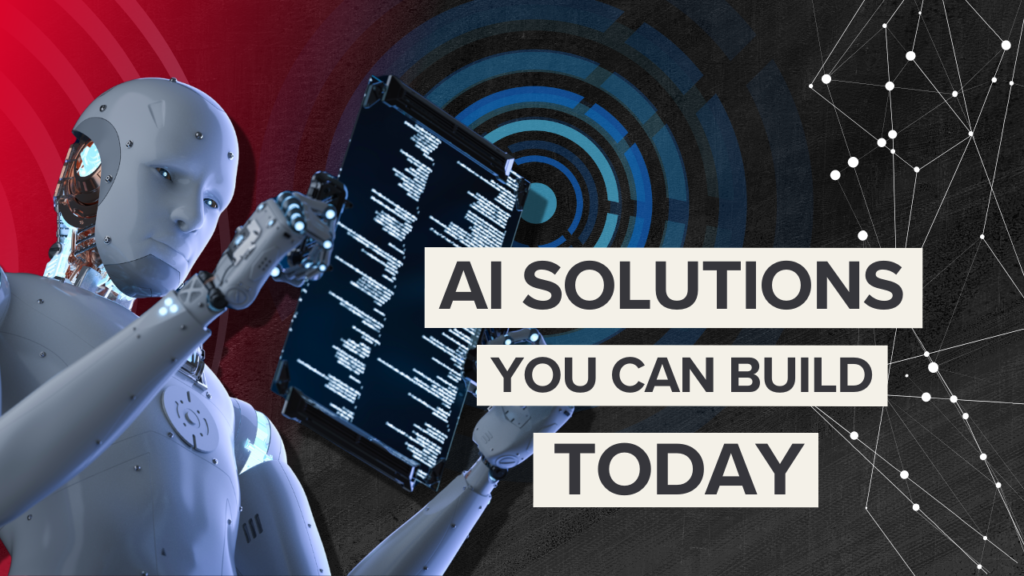Introduction
The excitement around AI is undeniable. However, after speaking with clients, it’s clear that while people are enthusiastic about AI, many are unsure about how to apply it to real-world business scenarios. This blog will break down the various layers of AI and highlight business opportunities you can start today, even if you’re not a tech expert. By the end of this article, you’ll have actionable insights into building an AI-driven business.
Understanding the Three Layers of AI Business Opportunities
When we talk about AI, there are generally three types of businesses:
- Infrastructure Layer: This includes companies building GPUs and TPUs, like Nvidia and Google.
- Support Layer: Companies supporting AI applications with services like cloud hosting and AI model APIs.
- Application Layer: This is where consumer-facing AI applications come to life, such as AI photo editors and automated systems for specific industries.
Let’s dive deeper into each of these layers to understand the risks, rewards, and potential opportunities.
The Infrastructure Layer: High Risk, High Reward
The infrastructure layer is where companies like Nvidia thrive. This layer involves building the powerful hardware, such as GPUs (Graphics Processing Units) and TPUs (Tensor Processing Units), that enable AI applications. Nvidia, for example, is now one of the most valuable companies globally, thanks to its dominance in AI hardware.
However, building a business in this space comes with significant challenges. It often requires billions of dollars in investments, cutting-edge technology, and the ability to compete with established players.
Key takeaway: While the rewards are enormous, the barriers to entry are steep. Only companies with substantial budgets and long-term visions should consider entering this space.
The Support Layer: The AI Backbone
The support layer is where AI becomes accessible to the public. Companies like OpenAI have developed models that allow developers to build AI applications on top of their infrastructure. Think of this layer as the backbone that powers AI applications, much like how the internet supported the rise of Google and Facebook.
One of the most significant developments here is the rise of large language models (LLMs), like ChatGPT. While developing an LLM can cost millions of dollars, there are several ways to enter this space without breaking the bank. For instance, open-source models like Llama are emerging as powerful alternatives to proprietary solutions.
Business Ideas for the Support Layer:
- Develop an LLM: Open-source your model to make it accessible to others who can’t afford to develop their own.
- Create Specialized APIs: Focus on specific tasks like weather data, content analysis, or file reading to create niche APIs.
- Build an Orchestration Platform: Develop tools that allow businesses to create and manage AI workflows more efficiently.
- Explore Adjacent Solutions: Consider building vector databases or other supporting technologies that complement AI applications.
The Application Layer: Where Most Opportunities Lie
Finally, the application layer is where you can have the most immediate impact. Unlike the infrastructure and support layers, building in the application layer doesn’t require massive investments or years of development. You can start with a small team and scale as you grow.
There are endless possibilities in this space, from AI photo editors like Photoroom to AI-driven tools that streamline compliance tasks, like Greenlite. Even Meta’s CEO, Mark Zuckerberg, has mentioned that there will be years of innovation in this layer, even if AI technology stops advancing today.
Pro tip: The key to success in the application layer is pairing AI with a real-world problem. Don’t build an AI product just for the sake of it—ensure that your solution addresses a genuine need in the market.
Application Layer Business Ideas:
- AI for Health: Build an AI gym buddy that helps users improve their nutrition and fitness performance.
- AI for Law: Accelerate the work of lawyers by creating AI tools that handle data protection and other legal processes.
- AI for Writing Documentation: Create an AI agent that writes personalized documentation based on individual preferences and communication styles.
Real-World Examples of AI Applications
There are already many exciting companies making waves in the AI application layer. Some notable examples include:
- Flair.ai: An AI-powered design tool for product photography.
- Grammarly: A popular AI writing assistant that helps users improve their writing style and grammar.
- PermitFlow: A software that streamlines the construction permitting process using AI.
These businesses demonstrate that you don’t need a large budget to create a successful AI product—just a solid idea and a clear market fit.
Final Thoughts: Finding Your Place in the AI Ecosystem
To summarize, AI business opportunities can be found across three layers: infrastructure, support, and application. While the infrastructure layer requires significant capital and expertise, the application layer offers countless opportunities for innovation with relatively low barriers to entry.
If you’re excited about the future of AI and want to explore how it can reshape your business or career, start by identifying a real-world problem you’re passionate about solving. From there, you can use AI to develop a solution that has the potential to generate significant value.

